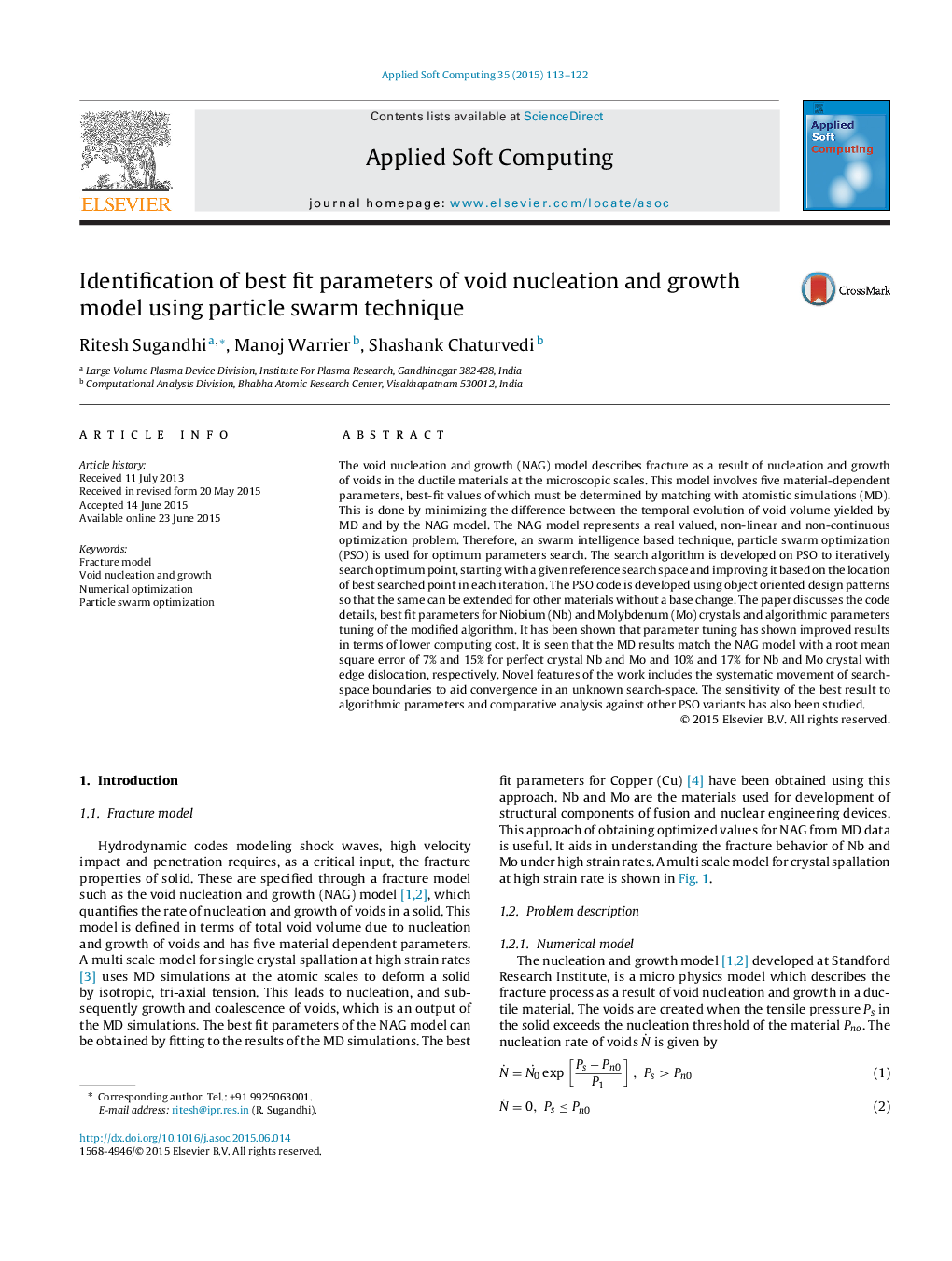| Article ID | Journal | Published Year | Pages | File Type |
|---|---|---|---|---|
| 495153 | Applied Soft Computing | 2015 | 10 Pages |
The void nucleation and growth (NAG) model describes fracture as a result of nucleation and growth of voids in the ductile materials at the microscopic scales. This model involves five material-dependent parameters, best-fit values of which must be determined by matching with atomistic simulations (MD). This is done by minimizing the difference between the temporal evolution of void volume yielded by MD and by the NAG model. The NAG model represents a real valued, non-linear and non-continuous optimization problem. Therefore, an swarm intelligence based technique, particle swarm optimization (PSO) is used for optimum parameters search. The search algorithm is developed on PSO to iteratively search optimum point, starting with a given reference search space and improving it based on the location of best searched point in each iteration. The PSO code is developed using object oriented design patterns so that the same can be extended for other materials without a base change. The paper discusses the code details, best fit parameters for Niobium (Nb) and Molybdenum (Mo) crystals and algorithmic parameters tuning of the modified algorithm. It has been shown that parameter tuning has shown improved results in terms of lower computing cost. It is seen that the MD results match the NAG model with a root mean square error of 7% and 15% for perfect crystal Nb and Mo and 10% and 17% for Nb and Mo crystal with edge dislocation, respectively. Novel features of the work includes the systematic movement of search-space boundaries to aid convergence in an unknown search-space. The sensitivity of the best result to algorithmic parameters and comparative analysis against other PSO variants has also been studied.
